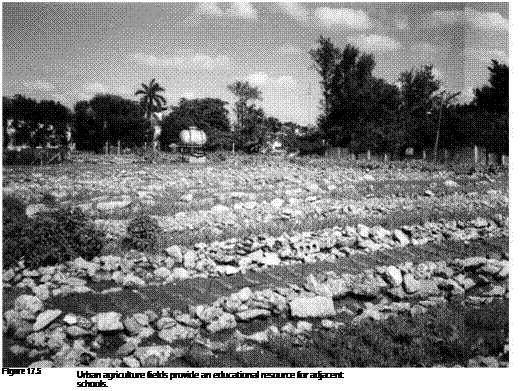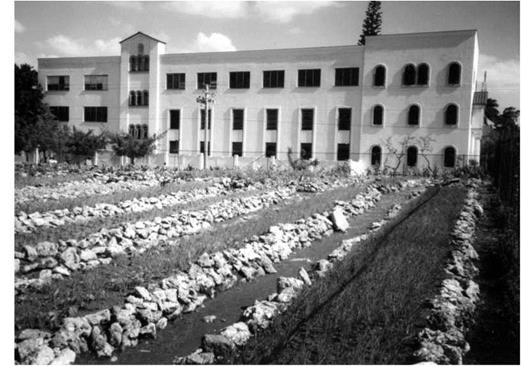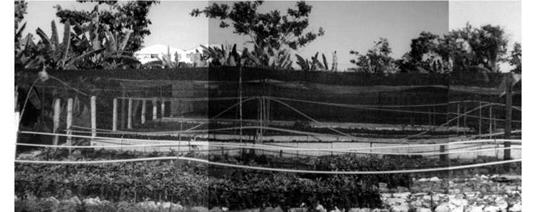The size of urban agriculture sites in Cuba relates both to their location in the city and the type of urban agriculture practised (see Table 17.1 and Chapter 16).
Organoponicos populares are the most visible type of urban agriculture, although not the largest by total area or output. They are high yield urban market gardens, run commercially by their operators, selling vegetables from the ‘farm gate’. In areas where vegetable production has been established, there are often floral organoponicos, producing cut flowers and garden plants. The size of organoponicos vary depending upon site availability and the number of people farming them. Cultivation is entirely manual, often using selfmade tools. The smallest organoponicos have a cultivated area in the order of 500 m2, which corresponds to the maximum area one person can
 |
work – for comparison, a standard allotment site in England has an area of 250 m2. The La Terminal organoponico in Rodas is fairly typical, with three people cultivating 1200 m2 of raised beds. Significantly larger organoponicos do exist, for example the 4 Caminos site, which has a planted area of 3400 m2 and a correspondingly larger workforce.
In organoponicos raised beds are used to isolate crops from soil which might be contaminated, and to contain the volume of soil to which compost is applied. The raised beds also provide healthier working conditions as the amount of bending required is reduced. A surprising amount of space is required for access paths and ancillary buildings. It is not unusual for a growing area of about 1000 m2 to require a site of 3000 m2. Peripheral areas of sites, initially unplanted, are often cultivated over time, thus increasing the efficiency of plots.
‘Autoconsumos estatales’ are similar to organoponicos, but are sited within the grounds of factories or other institutions and supply their local food needs. ‘Huertos’ or ‘Parceleros’ form another category and are small-scale plots usually cultivated by a single
family; they are equivalent to allotments in England, although each cultivator’s plot is often larger.
In reality, the differences between these categories are blurred. Nevertheless they do provide some insight in to the different forms of urban agriculture.
In 2000, in Havana alone there were more than 22 000 producers involved in cultivating 8 778 hectares of land. Table 17.1 shows the variation in yield between more traditional state farms and high yield urban gardens. Productivity for all types of urban agriculture has increased dramatically during Cuba’s special period, for example, a doubling of productivity between 1994 and 2000, from 12 kg/m2kg to 25 kg/m2kg for high yield urban gardens.
Nursery houses, producing fruit trees and seeds are found either within organoponicos or on separate sites. Their output supplies the local population with plants for gardens and urban agriculture sites.
|
Riverbank and recreation
|

|
|
|






